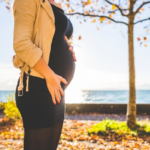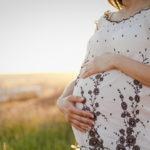Special treatment during pregnancy
During pregnancy, the diet of the concubines is increased by half compared to before. Before the expected delivery date, the birth mother of the concubine will be allowed to enter the palace to take care of her daughter and stay until the child is full-term and can leave the palace. The royal physicians also pay more attention and always have someone on duty in the medical room and pharmacy.
In addition, pregnant concubines will temporarily have limited gestures and behaviors, such as talking and rubbing their bellies, to help the princess and prince be born in the best condition, intelligent, and healthy.

Preparation for childbirth
These preparations bear the characteristics of Manchu people:
Preparation of a joyful pit
A joyful pit will be dug next to the place where the pregnant concubine resides. After digging, a pair of chopsticks (which means the son will be born soon), red silk, gold and silver jewelry will be placed there. This is also the place to bury the placenta and umbilical cord after giving birth.
Choosing ma ma
This is the term used by women who have been married and have children of both genders according to the customs of the Manchu people.
In the Qing Dynasty, it was believed that these ma mas would bring good fortune to the mothers, create more blessings for smooth childbirth. The age of the ma mas is from 20 to 40, and they are always on duty at the imperial palace and directly take care of the pregnant concubines.

Preparing childbirth supplies
This includes the clothes for the newborn, including pants, shirts, bibs… They are mainly made of high-quality silk to ensure the best comfort for the princes and princesses.
Preparing childbirth tools
The necessary tools include a large wooden box, wooden basin, birth tools, black mat, and other utensils. Especially, there are 2 indispensable midwifery items in the concubine’s expected delivery day in the Qing Dynasty, which are easy childbirth stone and wooden knife.
Easy childbirth stone is taken from Mount Truong Bach, a volcanic mountain with a famous Heavenly Lake. This is a type of volcanic stone rich in gas, with the characteristic of floating on water. The people living around the mountain often call it floating stone. The Manchu people take advantage of the buoyancy of the floating stone on the water to associate it with ease, smoothness. Therefore, they often place the easy childbirth stone in front of the concubine’s birthing room, hoping for the smooth birth of the child.

As for the wooden knife, it is made from the hoe tree growing on Mount Truong Bach. At that time, the Chinese believed that the hoe tree had the effect of dispelling demons and represented loyalty and reliability.
On the concubine’s expected delivery day, a wooden knife attached with red thread will be hung on the birthing room door to prevent evil spirits from causing trouble and help the child be born healthy and without deformities. It also makes the childbirth process easier for the pregnant woman.






































